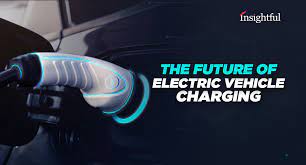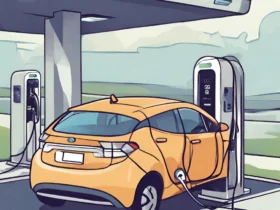Electric vehicles (EVs) are rapidly transforming the automotive landscape, driven by increasing consumer demand and technological advancements. As of 2023, global EV sales have surged, with millions of units sold annually, reflecting a significant shift towards sustainable transportation. Charging infrastructure has also expanded dramatically, making it easier for drivers to access charging stations, with thousands installed worldwide. Additionally, studies show that EVs produce fewer emissions than traditional gasoline vehicles, contributing to reduced air pollution and greenhouse gas emissions. Market forecasts suggest continued growth, with experts predicting that electric vehicles will make up a substantial portion of all vehicle sales by the end of the decade, marking a pivotal change in how we think about mobility and environmental responsibility.
Electric vehicles (EVs) are rapidly reshaping the automotive landscape, marked by impressive electric vehicle stats and facts that underscore their growing significance in our daily lives. In recent years, global sales of electric vehicles have soared, with over 10 million units sold worldwide in 2022 alone, a remarkable increase from previous years. This surge can be attributed to heightened environmental awareness, advancements in battery technology, and supportive government policies promoting clean energy. In fact, a staggering 80% of consumers now express interest in electric vehicles, as shown by various surveys, revealing a cultural shift toward sustainability. Additionally, electric vehicle stats and facts reveal that the market share of EVs is projected to reach 30% of total vehicle sales by 2030, reflecting the increasing adoption of electric mobility.

In addition to sales and infrastructure, electric vehicle stats and facts also highlight the environmental benefits of EV adoption. Studies show that electric vehicles produce, on average, 50% fewer emissions than conventional gasoline-powered vehicles over their lifetime, considering the entire lifecycle from manufacturing to disposal. This significant reduction in carbon footprint is crucial in the fight against climate change, as transportation accounts for nearly 25% of global greenhouse gas emissions. Moreover, electric vehicles contribute to improved air quality, particularly in urban areas where pollution levels can be dangerously high. This is especially important as cities around the world implement stricter emissions regulations and promote cleaner air initiatives.Another noteworthy aspect of electric vehicle stats is the growing interest from major automakers. Nearly every major automotive manufacturer has committed to electrifying their fleets, with many planning to transition to fully electric offerings within the next decade. For instance, companies like Ford, General Motors, and Volkswagen have announced substantial investments in electric vehicle technology, with plans to introduce numerous new electric models by 2025. This commitment from established players is a strong indicator of the long-term viability of the electric vehicle market and its potential for continued growth. Furthermore, the global market for electric vehicles is projected to reach $800 billion by 2027, demonstrating the increasing financial stakes in this sector.The demographics of electric vehicle buyers are also evolving, as electric vehicle stats show that ownership is becoming more diverse. Traditionally, early adopters of electric vehicles were often affluent consumers, but recent trends indicate that lower-income households are increasingly considering EVs as a viable option. Various government incentives and rebates, along with the decreasing cost of electric vehicles, are making it easier for more people to make the switch. Additionally, electric vehicle stats indicate that the popularity of used electric vehicles is rising, providing a more affordable entry point for many potential buyers.
Despite the many positive electric vehicle stats and facts, challenges remain in the widespread adoption of electric vehicles. Issues such as charging infrastructure disparities, particularly in rural areas, and the need for more sustainable battery recycling methods are critical areas that require attention. However, ongoing research and investment in these areas are promising, suggesting that solutions are on the horizon. As governments and private sectors continue to collaborate on building a robust charging network and improving battery technology, the electric vehicle landscape will likely evolve even further.In summary, electric vehicle stats and facts illustrate a dynamic shift toward sustainable transportation, driven by technological advancements, market demand, and environmental considerations. With electric vehicle sales on the rise, improving battery technology, and a growing charging infrastructure, the future of mobility appears to be electric. As more consumers embrace electric vehicles, the potential for reduced emissions and a cleaner environment becomes increasingly attainable, making it an exciting time for the automotive industry and consumers alike. The transition to electric vehicles represents not only a change in how we drive but also a fundamental shift in our approach to energy consumption and environmental responsibility.


















Keep up the fantastic work! Kalorifer Sobası odun, kömür, pelet gibi yakıtlarla çalışan ve ısıtma işlevi gören bir soba türüdür. Kalorifer Sobası içindeki yakıtın yanmasıyla oluşan ısıyı doğrudan çevresine yayar ve aynı zamanda suyun ısınmasını sağlar.
Keep up the fantastic work! Kalorifer Sobası odun, kömür, pelet gibi yakıtlarla çalışan ve ısıtma işlevi gören bir soba türüdür. Kalorifer Sobası içindeki yakıtın yanmasıyla oluşan ısıyı doğrudan çevresine yayar ve aynı zamanda suyun ısınmasını sağlar.
Bwer Company is a top supplier of weighbridge truck scales in Iraq, providing a complete range of solutions for accurate vehicle load measurement. Their services cover every aspect of truck scales, from truck scale installation and maintenance to calibration and repair. Bwer Company offers commercial truck scales, industrial truck scales, and axle weighbridge systems, tailored to meet the demands of heavy-duty applications. Bwer Company’s electronic truck scales and digital truck scales incorporate advanced technology, ensuring precise and reliable measurements. Their heavy-duty truck scales are engineered for rugged environments, making them suitable for industries such as logistics, agriculture, and construction. Whether you’re looking for truck scales for sale, rental, or lease, Bwer Company provides flexible options to match your needs, including truck scale parts, accessories, and software for enhanced performance. As trusted truck scale manufacturers, Bwer Company offers certified truck scale calibration services, ensuring compliance with industry standards. Their services include truck scale inspection, certification, and repair services, supporting the long-term reliability of your truck scale systems. With a team of experts, Bwer Company ensures seamless truck scale installation and maintenance, keeping your operations running smoothly. For more information on truck scale prices, installation costs, or to learn about their range of weighbridge truck scales and other products, visit Bwer Company’s website at bwerpipes.com.
Rely on BWER Company for superior weighbridge solutions in Iraq, offering advanced designs, unmatched precision, and tailored services for diverse industrial applications.
Revolutionize your weighing needs with BWER, Iraq’s top provider of weighbridge systems, featuring unparalleled accuracy, durability, and expert installation services.
At BWER Company, we prioritize quality and precision, delivering high-performance weighbridge systems to meet the diverse needs of Iraq’s industries.
It is in point of fact a great and useful piece of info. I’m happy that you shared this helpful info with us. Please keep us up to date like this. Thank you for sharing.
I also am eating well and exercising more amoxicillin clavulanate generic name
I view something really interesting about your web blog so I saved to my bookmarks.